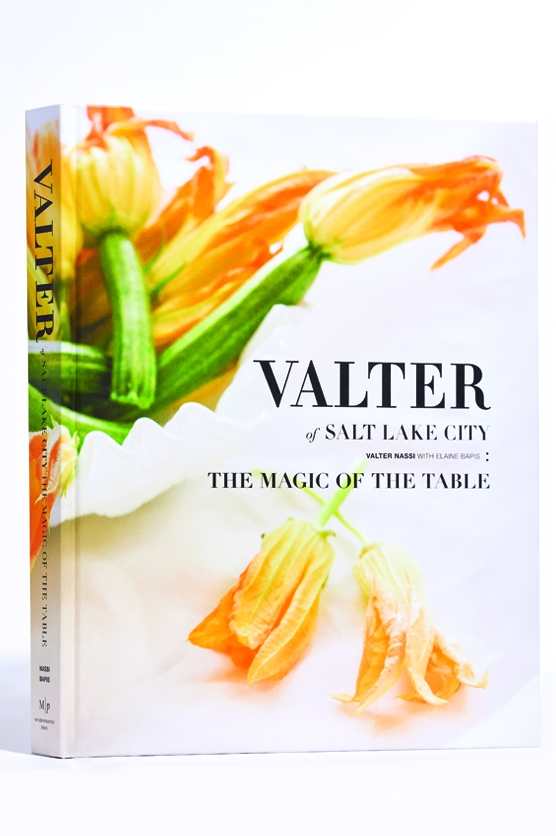
Valter of Salt Lake City
The Magic of the Table
Valter of Salt Lake City, a chef’s lush memoir, shares a generous philosophy of food.
A decadent chef’s memoir, Valter Nassi’s Valter of Salt Lake City celebrates the culinary and philosophical grounding that led to his lasting success.
About “food’s synergy and its position in human life,” this is a sumptuous project packaged for coffee table perusal. Its photographs are lush, and it features the chef’s handwritten notes and sketches of imagined dishes as an example of all that goes into delivering a transformative dining experience. It deviates from what may be expected of restaurant-based tomes, eschewing the cold mechanics of recipes sans context to set forth the chef’s philosophy of food: It is about nourishment, yes, but also about the compatibility of ingredients, the art of composition, elevating ordinary circumstances, and one’s company around the table. To be a successful chef, the book suggests, one must be attentive not just to the restaurant itself but to life outside the kitchen as well.
To punctuate this holistic approach, Nassi starts his culinary story where he started, discussing his mother’s kitchen and what he learned at his uncle’s seaside restaurant in the late 1950s. He notes how both environments shaped his culinary style:
In my parents’ house … the business of fine food—truffles, porcini mushrooms, cheeses, fresh fish—conditioned my appetite. Eating for us was not a choice. Enjoying the family meal became a duty.
The result is a rounded picture of a chef’s formation and commitment to his craft.
While the prose is sometimes grandiose or obscure, its coverage of food itself is tantalizing, as with descriptions of one of the signature dishes at Valter’s Osteria: “very thin sliced prosciutto with very thin sliced melone and a drop of honey and lemon.” And the tone is vivacious and hospitality-focused throughout: “The job of food is to make people happy … food [is] synonymous with joy.”
There’s undeniable appeal to the book’s spirited approach. Multiple events are referred to as “magical,” and the birth of Nassi’s son (“our love”) is discussed in terms of “beauty” and how it impacted a New Mexico restaurant opening. Such bountiful expressions pair well with the generous helpings of black-and-white photographs throughout—some capturing the chef’s formative memories, others depicting him in his element, raising a glass to his diners with a wide smile or dialing dishes in in the kitchen. They also complement the bright images of ingredients like squash blossoms and dishes both complete and in the making, including tempting crudos, fresh pastas, and shaved peaches. Pages dedicated to pull quotes make the book more sprawling than it needs to be while also reflecting its overarching sense of joie de vivre.
The book also speaks to home cooks in its later portions, directing them through cooking by honoring ingredients—letting the cannellini bean become what it must; following the possibilities represented by a lobster; knowing when a steak is ready to serve. Rigidity is rejected and creativity celebrated. “I want to tell people to respect the culinary magic inside themselves that guides them to put ingredients together in a chronological way. Follow your inner sense,” Nassi encourages. “Let your instincts in the kitchen be your guide.”
Certain to delight regulars of Valter’s Osteria and likely to tempt new diners to its tables, chef Valter Nassi’s enthusiastic memoir is a vicarious expression of the fine dining experiences at his Salt Lake City restaurant, set in the context of all that formed his broad approach to food and fine dining.
Reviewed by
Michelle Anne Schingler
Disclosure: This article is not an endorsement, but a review. The publisher of this book provided free copies of the book and paid a small fee to have their book reviewed by a professional reviewer. Foreword Reviews and Clarion Reviews make no guarantee that the publisher will receive a positive review. Foreword Magazine, Inc. is disclosing this in accordance with the Federal Trade Commission’s 16 CFR, Part 255.
